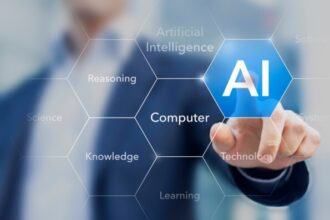When Alan Turing invented the first intelligent machine, few could have predicted that the advanced technology would become as widespread and ubiquitous as it is today.
Since then, companies have adopted AI for pretty much everything, from self-driving cars to medical technology to banking. We live in the age of big data, an age in which we use machines to collect and analyze massive amounts of data in a way that humans couldn?t do on their own. In many respects, the cognition of machines is already surpassing that of humans.
With the explosion of the internet, AI has also become a critical element of web design. Artificial intelligence has helped with everything from the building and customization of websites and brands to the way users experience those websites themselves.
Here are some of the ways AI is making web design increasingly sophisticated:
AI designs websites
Artificial design intelligence (ADI) tools are the building blocks of many of today?s websites. These days, ADI systems have evolved into effective tools with functional and attractive results. Wix and Bookmark, for example, offer popular automated website building tools with customizable options. Designers, developers, and everyday entrepreneurs no longer have to build websites from the ground up, nor do they need to spend hours choosing the perfect template. Instead, both Wix and Bookmark claim that websites can intelligently design themselves, using nothing more than the site?s name and the answers to a few quick questions.
Not only does AI help engineer the web building process, but it?s also become the designer behind the brand names and logos that dominate a website?s home page. Companies are turning to artificial intelligence to automate their branding process, using AI tools like Tailor Brands to design their own customized logos in seconds. In this way, AI has made good web design more accessible and affordable for big companies and small-scale entrepreneurs alike.
AI enhances user experience
AI isn?t just changing web design on the developer end; it?s changing the way users experience websites, too. AI is the force behind the chatbots that offer conversation or assistance on many companies? websites. While conversations with chatbots once felt frustrating, repetitive, and a little too robotic, more sophisticated AI-powered chatbots use natural language processing (NLP) to have more natural, authentic conversations and to genuinely ?understand? their customers? needs. Sephora?s chatbot Kik is one example of a powerful NLP chatbot that understands customers? beauty needs and provides them with recommendations based on these needs.
In addition to the practical value of chatbots, the prevalence of chatbots indicates an increasing shift towards customer-focused websites, ones that prioritize drawing customers in over getting their message out. With the emergence of AI chatbots, websites have transformed into customer engagement platforms, where customers can offer their feedback, ask for help, or find products or services suited to their preferences.
AI analyzes results
We?ve seen how AI has benefitted both website building and user experience. A third way AI is affecting web design is by making possible analytics tools that help companies analyze their results and refine their websites accordingly.
By crunching down big data into analyzable numbers and patterns, predictive analytics tools like TensorFlow and Infosys Nia reveal real-time insights about what does and doesn?t work for website visitors and prospective customers. This enables businesses to understand which types of customers are drawn to their site, and to accommodate those visitors with a seamless user experience. Using results from AI-powered analytics platforms, web developers and designers are able to tweak and refine their site and make it increasingly user-friendly.
AI in web design: Where is it heading next?
AI is already being used in web design to make site building and design easier and more accessible, to enhance UX and further user engagement, and to drive site improvement through big data analytics. As artificial intelligence becomes even more advanced, affordable, and widespread, it will continue to affect web design in ways we can only imagine. Will improved natural language processing make chatbots indistinguishable from human representatives? Will websites readily adapt, real-time, to users? preferences and needs? Whatever happens, AI is already the new normal.











